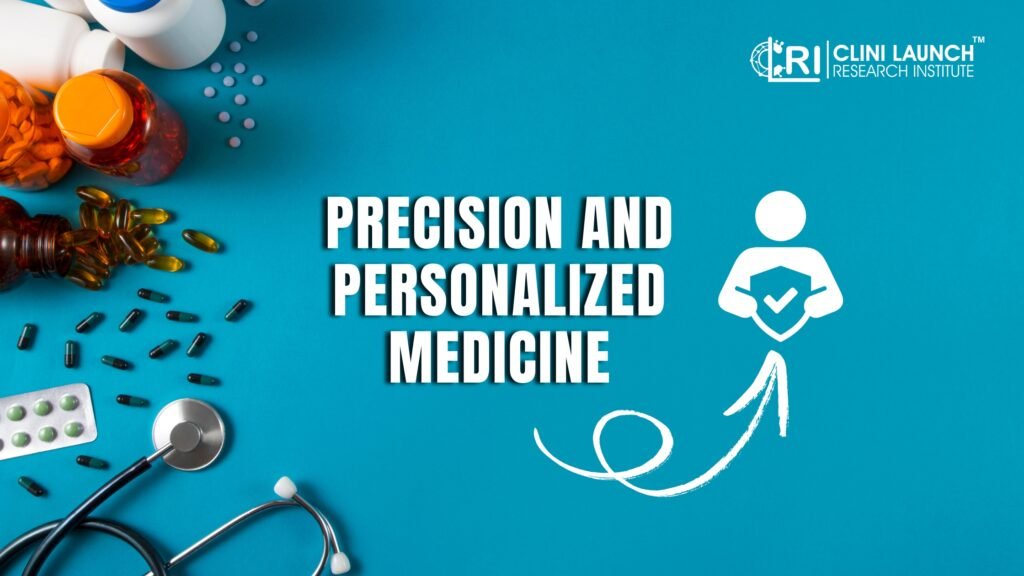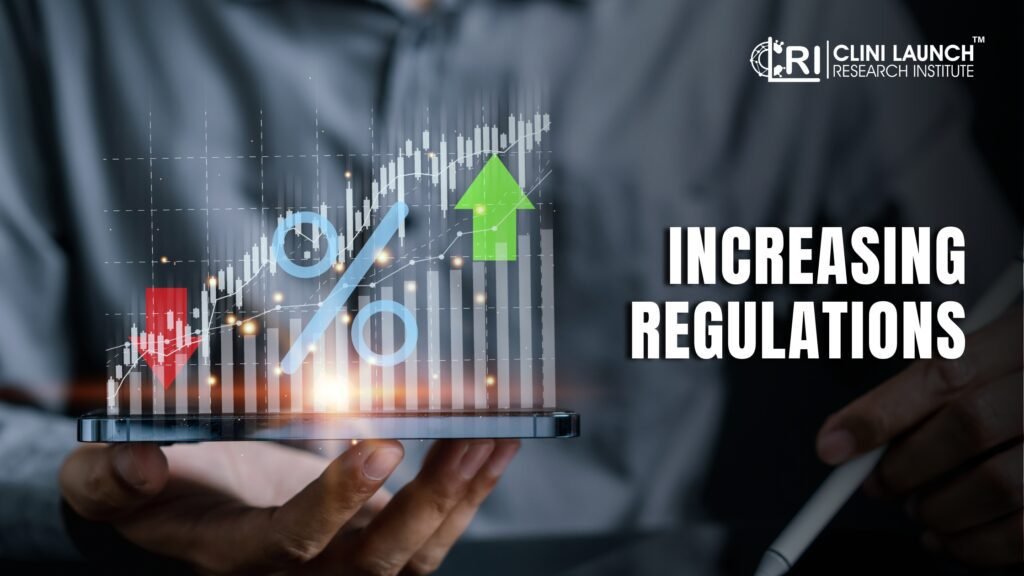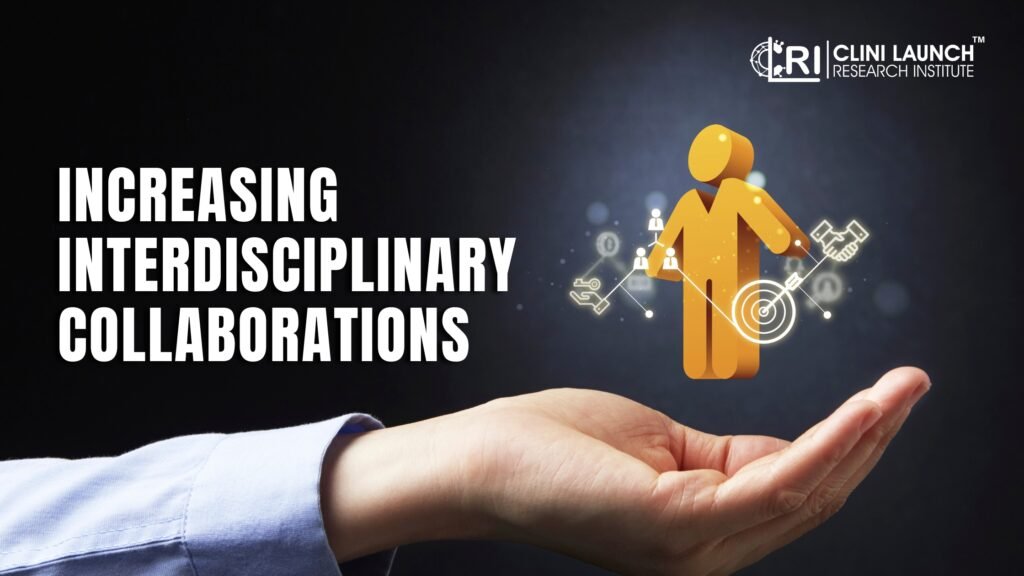Best Clinical Research Institute
Strategic Partnership to Embed Enterprise-grade Skills in Healthcare Education
Biostatistics is a critical and growing field within biometrics and healthcare recognizing its potential. With the recent projections, the demand for biostatisticians is clearly indicating increase in funding and salaries. They are experts in biological data analysis crucial in healthcare. The expertise in biostatistics professionals will be aligned with the ongoing demand of societal, technological, and regulatory changes.
In this blog post, we will be exploring the top 5 reasons biostatisticians will be crucial hire for the future of biometrics and healthcare applications.
Advancing Biometric and Healthcare Data
The consistent change in healthcare data indicates analysis is crucial in these developing trends. According to the US Bureau of Labour Statistics, the expected demand for biostatisticians rise significantly by 2031 with an increase up to 31%.
With the significant growth in experiencing biostatistics (especially in biometrics), with the rise in salaries and projected funding. However, the demand for biostatisticians has consistently exceeding their supply in the United States since Covid 19. Even, this trend is followed by the European Union and developing regions. They are experiencing similar demand with the same expectations specifically driven by healthcare sector and biometrics adoption.
The increasing demand for tailored results underscores the growing reliance on biostatisticians. Their specialized skills in study design, data collection, and the interpretation of complex datasets are essential for extracting meaningful insights. Therefore, attracting and retaining the best biostatisticians is critical now, before the demand becomes unsustainable.
5 Reasons Biostatisticians will be crucial hire
Let us explore the top five reasons to hire biostatistics professionals for the growth of clinical research team in 2025 to establish the relevance of overall biostatistical analysis.
Healthcare Data Explosion

The healthcare industry is facing a data explosion, fueled by sources like electronic health records, wearables, and genomic sequencing. This influx of complex information creates both a challenge and a significant opportunity for analysis. Projections estimate a 36% compound annual growth rate for-healthcare data by 2025, exceeding growth rates in sectors like media and entertainment.
Big data analytics holds the potential to improve quality of life and reduce operational costs in healthcare. It facilitates predictive analytics for early disease detection, population health management, precision medicine, and improved healthcare operational efficiency.
This surge in data has created a growing demand for biostatisticians. Their expertise is crucial for coordinating and interpreting these massive datasets. Biostatisticians develop and implement statistical models to uncover patterns, trends, and relationships within the data. This work is essential for advancing disease prediction, personalized treatment strategies, and optimizing the allocation of healthcare resources.
The Changing Roles in Healthcare
Biostatistical analysis is crucial in managing huge healthcare data and its significance will only grow in the future. With the rapidly evolving role of biostatisticians due to explosion of healthcare data and the adoption of technologies such as big data and artificial intelligence. If a clinical research team doesn’t have a biostatistician, it is highly recommended to hire them as they become essential for successful endeavour.
Here is why?
Biostatistics for Healthcare Data: The healthcare industry is experiencing a data explosion, particularly with the rise of biometrics from wearables and genetic testing. This surge in data has created a high demand for biostatisticians, who are experts in using data science tools to analyze complex biological and health data. By uncovering hidden patterns within this data, they play a crucial role in personalizing medicine and improving patient outcomes.
Biometric Data Analysis: By applying sophisticated analytical techniques to massive datasets of biological information, biostatisticians are able to make more accurate predictions about patient health and develop more effective, personalized treatments.
Developing Biometric Models: Biostatisticians are creating innovative statistical models to analyze complex biometric data, which will enable a deeper understanding of healthcare patterns and trends, ultimately leading to better healthcare outcomes.
Optimizing Biometric Data Use: The working professionals play a vital role in maximizing the value of the increasing amount of biometric data in healthcare. They help healthcare organizations effectively utilize this data to make well-informed decisions.
In the data-driven healthcare future, they will be essential leaders, guiding clinical teams through complex information and driving meaningful change.
Health in Focus

The COVID-19 pandemic has underscored the need for prioritizing public health solutions, particularly for the growing population of older adults. It is crucial to develop practical and evidence-based strategies that promote healthy aging and effectively address age-related health concerns.
The number of older adults in the United States is expected to grow significantly in the coming decades. In the context of the United Healthcare by 2050, it is estimated that there will be 82 million Americans aged 65 and older, a 47% increase from 2022. This increase in the older adult population is likely to lead to a rise in the prevalence of chronic diseases, such as heart disease, diabetes, and Alzheimer’s. As these conditions often require hospitalization, the growing number of older adults with chronic diseases could put a strain on the healthcare system. It is therefore important to develop and implement interventions and preventive measures to address the health needs of this population.
To meet the healthcare challenges of a growing elderly population, it is crucial to develop clinical programs that encourage healthy aging, effectively manage chronic illnesses, and offer comprehensive long-term care options.
It is essential for public health initiatives to addressing the challenges of an aging population. With the use of their expertise in data analysis, evaluation, and predictive modelling, these skilled professionals contribute to:
Data Analysis and Interpretation: Biostatisticians analyze biometric data from public health programs, such as vaccination campaigns. They examine participation trends across different demographic groups and use biometric identification patterns to pinpoint and address unequal access to these programs through targeted interventions.
Biometric Monitoring: Biostatisticians use data from wearables like fingerprint and facial recognition to monitor heart rate and sleep patterns in older adults participating in chronic disease programs. This analysis helps determine how effective the programs are.
Predictive Modelling: By combining biometric data like gait and vital signs with traditional health information, biostatisticians can better predict healthcare needs and the effects of aging on public health. This allows for proactive planning and the development of targeted biometric monitoring tools for at-risk patients.
Future Role of Biostatistics Professionals
The increasing prevalence of chronic illnesses and aging populations necessitates the expertise of biostatisticians. Their data analysis skills are crucial for healthcare teams to understand trends in these conditions, facilitating effective planning and targeted responses.
Biostatisticians will play a key role in developing personalized interventions to improve health outcomes for these vulnerable groups. Therefore, employing qualified biostatisticians will significantly enhance healthcare services for those who require them most.
Precision and Personalized Medicine

The fields of precision and personalized medicine are rapidly expanding. According to Statista, it is estimated that global spending on precision medicine treatments will reach $82 billion by 2027, which is a 150% increase from 2022. The global personalized medicine market is expected to surpass $1.2 trillion by 2033.
It is believed that traditional one-size-fits-all healthcare methods are inadequate with the expansion of the precision and personalized medicine. Cellpress reported that precision medicine is crucial with the increase in technological advancements and developing needs in the healthcare by 2030. From the technological advancements, healthcare organizations are facing challenges in customizing treatments for each patient while they use data-driven approaches.
Let’s discuss the contribution and critical functions of these key professionals working as Biostatisticians:
Data Analysis Expertise: They excel themselves at refining intricate datasets with the identification of essential patterns for personalized treatment decisions.
Trial Design Proficiency: Biostatisticians have the skills in setting up clinical trials to confirm new personalized medicine methods by relying on solid evidence-based healthcare practices.
AI Integration Leadership: They bring in advanced artificial intelligence and machine learning tools into patient care processes.
Risk Stratification Expertise: The healthcare professionals use sophisticated data analysis to spot high-risk patients. It will help them understand their situations, take early action, and tailored treatments to prevent complications.
Communication and Collaboration: The main function includes that they make the data understandable and practical to advance the personalized medicine projects.
The Importance of Biostatisticians in Targeted and Precision Healthcare
Biostatisticians are vital in the rise of personalized medicine. Their expertise in data analysis, trial design, and results interpretation enables the creation of individualized healthcare plans, ensuring treatments are grounded in strong evidence.
Current medical treatments are only effective for a minority of patients (30-60%). Personalized medicine aims to address this gap by tailoring treatments to an individual’s unique genetic makeup, environment, and lifestyle.
Biostatistics professionals are increasingly involved in using data science tools. They are into analysing detailed personal healthcare data likely the information from dietary trackers and activity monitors. Health analysis allows the healthcare professionals to predict most effective treatments will for individual patients. This leads to tailored healthcare plans and it will help potentially in improving health outcomes.
To sum it all up, we have found that the increase in importance of biostatisticians with the technology and data collection methods advance. It is also essential for the development and refinement in medical treatments through the analysis of patient outcomes. Therefore, the healthcare professionals will be key to future advancements in the biometric and healthcare data in 2025.
Increasing Regulations

As clinical trials have evolved over the past decade, it is to satisfy the increasing requirements of regulators, law enforcement, and healthcare providers. With the technological revolutions, it has simplified the development of drugs, medical devices, invasive procedures, innovative therapies, strict regulatory norms (due to rise of precision medicine), and treatments.
Several factors are contributing to stricter government oversight of the development and approval of new medical treatments:
Public Safety Concerns: Due to past safety concerns with medications, regulations have become stricter, including measures to protect biometric data and ensure public health.
Ensuring Biometric Device Efficacy: Biometric device regulations play a crucial role in ensuring the reliability and accuracy of these devices. By enforcing strict standards and guidelines, these regulations help prevent the use of faulty devices that could lead to inaccurate measurements and potentially compromise patient safety.
Transparency and Accountability in Biometric Research: When gathering biometric data, it’s important to have rules that are both moral and clear. These rules do two things: They help people trust that their information is safe and used correctly, and they make sure that everyone involved is responsible for following the rules.
Advancing Biometric Science: To maintain data reliability and accuracy, healthcare regulations are continuously revised to reflect the latest developments in biometrics.
Global Standardization: International regulators are joining forces to create standardized rules for biometric data. Their goal is to make it easier to approve biometric devices and encourage the safe and responsible use of this technology on a global scale.
The Role of Biostatisticians in Regulatory Navigation
Biostatisticians are essential in navigating the evolving landscape of government regulations for emerging technologies like wearable devices. Their expertise is crucial for ensuring clinical trials meet all regulatory standards, from determining appropriate sample sizes and maintaining data quality to managing risks and facilitating collaboration among stakeholders. They act as a bridge between complex data and regulatory requirements, enabling companies to bring innovative health solutions to market while maintaining compliance.
Beyond individual technologies, biostatisticians play a vital role in shaping health policy. By analyzing population-level data and evaluating the effectiveness of public health interventions, they provide the evidence needed to inform policy decisions aimed at improving health outcomes and reducing healthcare disparities. Initiatives like the Limited CMC Development and Readiness Pilot (CDRP) and the FDA’s emphasis on diversity and inclusion in clinical trials underscore the growing importance of biostatisticians in driving both regulatory compliance and innovation within the healthcare industry.
These regulatory developments have far-reaching implications for all stakeholders in healthcare, including pharmaceutical companies, research institutions, and, most importantly, patients. Maintaining compliance with these evolving regulations is not just a legal requirement; it’s fundamental to ensuring the accuracy and reliability of clinical trial data, which ultimately impacts patient safety and treatment efficacy. These regulations represent a collective effort to enhance healthcare safety, effectiveness, and inclusivity across the US. Therefore, engaging the expertise of a qualified biostatistician is a critical investment for any organization seeking to navigate this complex regulatory environment and uphold the integrity of their clinical trials.
Increasing Interdisciplinary Collaborations

Modern healthcare is undergoing a significant transformation, moving away from the traditional siloed approach towards a collaborative, interdisciplinary model. Previously, healthcare professionals often worked in isolation, with specialists concentrating solely on their specific areas of expertise. This fragmented approach, however, has proven inadequate for addressing the increasingly complex health challenges of today.
Recognizing the limitations of this traditional structure, the healthcare field is embracing the power of interdisciplinary teams. These teams are composed of professionals from a diverse range of disciplines, including physicians, nurses, therapists, social workers, pharmacists, and biostatisticians. By bringing together this varied expertise, healthcare providers can offer more comprehensive and holistic patient care.
This collaborative approach has clear advantages, including:
Enhanced Patient Care: Interdisciplinary teams, by drawing on expertise from various fields, create comprehensive care plans that address the multifaceted nature of a patient’s health. This holistic approach not only leads to improved patient outcomes but also enhances their overall quality of life.
Reduced Errors: Interdisciplinary teams, composed of individuals with diverse backgrounds and areas of expertise, offer a significant advantage in healthcare by enhancing patient safety and elevating the standard of care. By bringing together a variety of perspectives, these teams are better equipped to identify potential errors or oversights, preventing them before they can negatively impact patient well-being. This collaborative approach ensures that all aspects of a patient’s care are thoroughly considered, leading to more comprehensive and effective treatment plans.
Improved Communication: Healthcare collaboration fosters open communication between providers and patients. When professionals from different fields work together, everyone involved in a patient’s care is well-informed and aligned in their approach.
Biostatisticians are essential to modern healthcare, playing a crucial role within interdisciplinary teams. Their specialized knowledge in statistical analysis and research methodologies allows them to contribute significantly to both patient care and medical research. From designing studies to interpreting data, their expertise is invaluable for advancing medical knowledge and improving patient outcomes.
Let us explore how:
Data Analysis
Biostatisticians play a crucial role in the medical field by working closely with clinicians and researchers. Their expertise lies in analyzing substantial volumes of medical data, encompassing patient records, clinical trial outcomes, and population health statistics. Through careful examination of this data, they uncover hidden patterns and trends, generating valuable insights that directly influence clinical decision-making and the development of effective treatment strategies.
One example of this collaborative work is the partnership between biostatisticians and oncologists. By analyzing data from cancer patients, they can pinpoint factors that correlate with treatment response and survival rates. These findings empower clinicians to personalize treatment plans for individual patients, leading to improved outcomes by maximizing the treatment’s effectiveness while minimizing potential side effects.
Research Collaboration
Biostatisticians are essential to the success of clinical trials. They work closely with doctors and scientists, contributing their expertise to all stages of the research process. This includes developing the study protocols, which outline how the trial will be conducted, and calculating the appropriate sample size to ensure statistically meaningful results. Perhaps most importantly, biostatisticians are responsible for analyzing the data collected during the trial to determine whether a new treatment is safe and effective.
A common example of their work is collaborating with pharmaceutical companies or academic institutions to design randomized controlled trials.
These trials are used to rigorously evaluate the effectiveness of new drugs for specific medical conditions. By carefully designing the study and applying appropriate statistical methods, biostatisticians ensure the results are reliable. This reliable evidence is then used to inform clinical practice, helping doctors make the best treatment decisions for their patients, and also plays a critical role in regulatory decisions about whether a new drug can be approved for use.
Cost-Effectiveness Analysis
Biostatisticians play a crucial role in healthcare by collaborating with administrators and policymakers to determine the cost-effectiveness of various treatments. They carefully analyze the potential costs and benefits of different interventions, considering factors such as treatment efficacy, patient outcomes, and how resources are used. For instance, a biostatistician might work with hospital administrators to analyze data on healthcare utilization to assess whether a new healthcare program or intervention is financially viable. By providing data-driven recommendations, they help healthcare organizations make the best use of their resources and enhance patient care.
The increasing integration of biometrics and the growing recognition of the importance of interdisciplinary collaboration in healthcare highlight the vital role of biostatisticians. Their expertise in data analysis and research is essential for driving innovation and improving patient care. They work effectively with clinicians, researchers, and healthcare administrators across various disciplines, bridging the gap between data and practical application.
Looking ahead to 2025, clinical research teams planning large or multidisciplinary projects should prioritize including biostatisticians in their collaborations. Their specialized skills in statistical analysis and interpretation are essential for the success of complex research endeavors and for translating research findings into meaningful improvements in healthcare practice.
Final Thoughts for Aspirants
The growth in the demand for biostatisticians, making them indispensable players in shaping the future of healthcare. By navigating the complexities of healthcare data, integration of artificial intelligence technologies, and advancement in personalized medicine is marking the importance of expertise in biostatistics.
With the increase in demand of data-driven and interdisciplinary collaboration, CliniLaunch provides the best bioinformatics training in India to the healthcare professionals. Looking ahead and beyond, CliniLaunch involves in upskilling the professionals and students working in the field of healthcare while we also help in driving innovation and contributing to the improvement in patient outcomes. For more details, visit our Biostatistics Training Course page.
References
- Biostatisticians Job Market https://www.careerexplorer.com/careers/biostatistician/job-market
- Demand for Biostatisticians https://www.bls.gov/ooh/math/mathematicians-and-statisticians.htm
- The Future of Healthcare Data https://www.linkedin.com/pulse/securing-future-healthcare-data-era-exponential-growth-kaiser–ksole
- Understanding Trends in Shaping American’s Population https://www.uhccommunityandstate.com/content/articles/understanding-the-trends-shaping-america-s-aging-population
- Total precision medicine treatment spending worldwide from 2022 to 2027 https://www.statista.com/statistics/1420946/spending-on-precision-medicine-treatments-globally
- Improving outcome through personalized medicine https://www.england.nhs.uk/wp-content/uploads/2016/09/improving-outcomes-personalised-medicine.pdf
- Randomised controlled trials—the gold standard for effectiveness research https://pmc.ncbi.nlm.nih.gov/articles/PMC6235704
